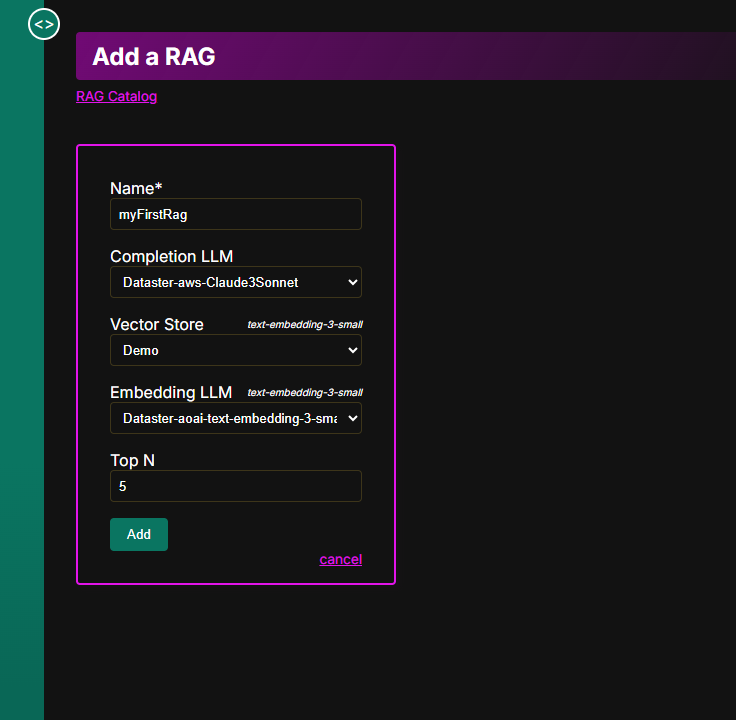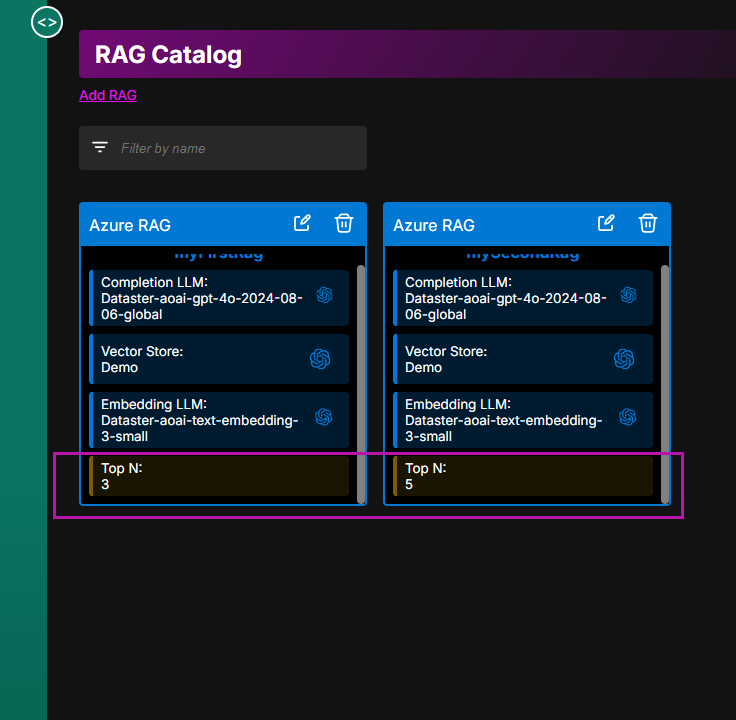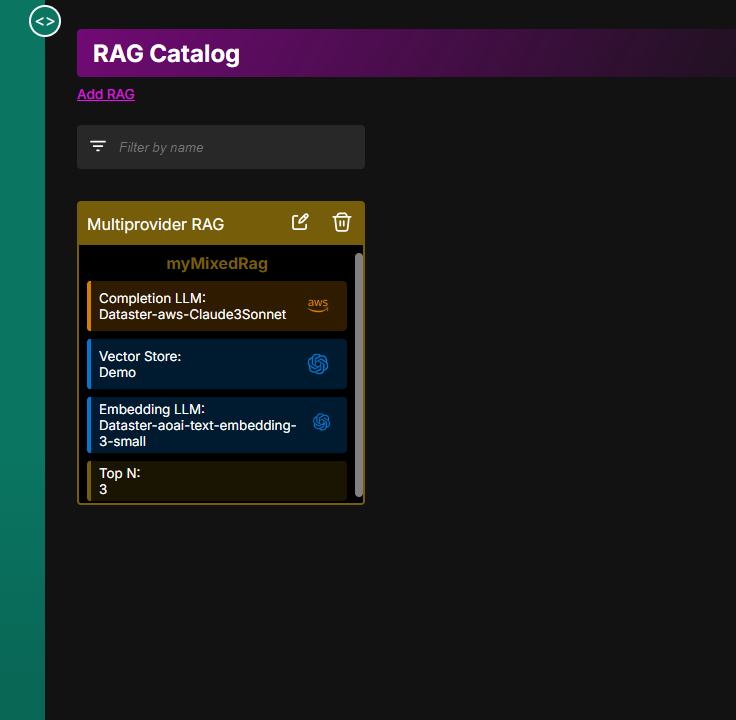
Dataster Documentation
Dataster helps you build Generative AI applications with better accuracy and lower latency.RAG Overview
Most GenAI applications require grounding data in some way, shape, or form to produce accurate answers. For that reason, Retrieval-Augmented Generation (RAG) is a widely adopted architecture for many use cases. When building a RAG, developers have many components to choose from and important decisions to make, such as selecting the right Large Language Model (LLM), the appropriate vector store, and the best set of parameters. The number of combinations can sometimes be overwhelming. Dataster helps determine the best components for a specific use case. We support many Large Language Models, several vector stores, and allow users to set the Top N parameter, which dictates how many text chunks are to be fetched from the vector store and included in the prompt. The full list of supported models can be found on our pricing page here.

Our approach lets users quickly create multiple RAGs and test which ones perform best for their specific use case in terms of both latency and accuracy of the answers. For example, if a user has already determined that the best model for their use case is GPT-4o and the best vector store is an index they have in Azure AI Search, they can quickly create multiple instances of this RAG with different values for the Top N parameter. This allows them to determine the optimal number of text chunks to fetch for their specific use case with their specific data.

Another interesting pattern that Dataster allows users to implement is multi-cloud RAGs, where the grounding data resides in one cloud and the Large Language Models in another. For example, a user may have their data in an Azure AI Search index but wish to use Claude 3 Sonnet on Amazon Bedrock. Another user may have their data in Amazon OpenSearch Serverless but wish to use GPT-4o for completion.

Conclusion
Dataster allows users to easily create RAG architectures by assembling the necessary components such as vector store, embedding model, completion model, and specifying the Top N parameter. Such a RAG can then be tested manually or automatically for a specific use case.
If you encounter any issues or need further assistance, please contact our support team at support@dataster.com.